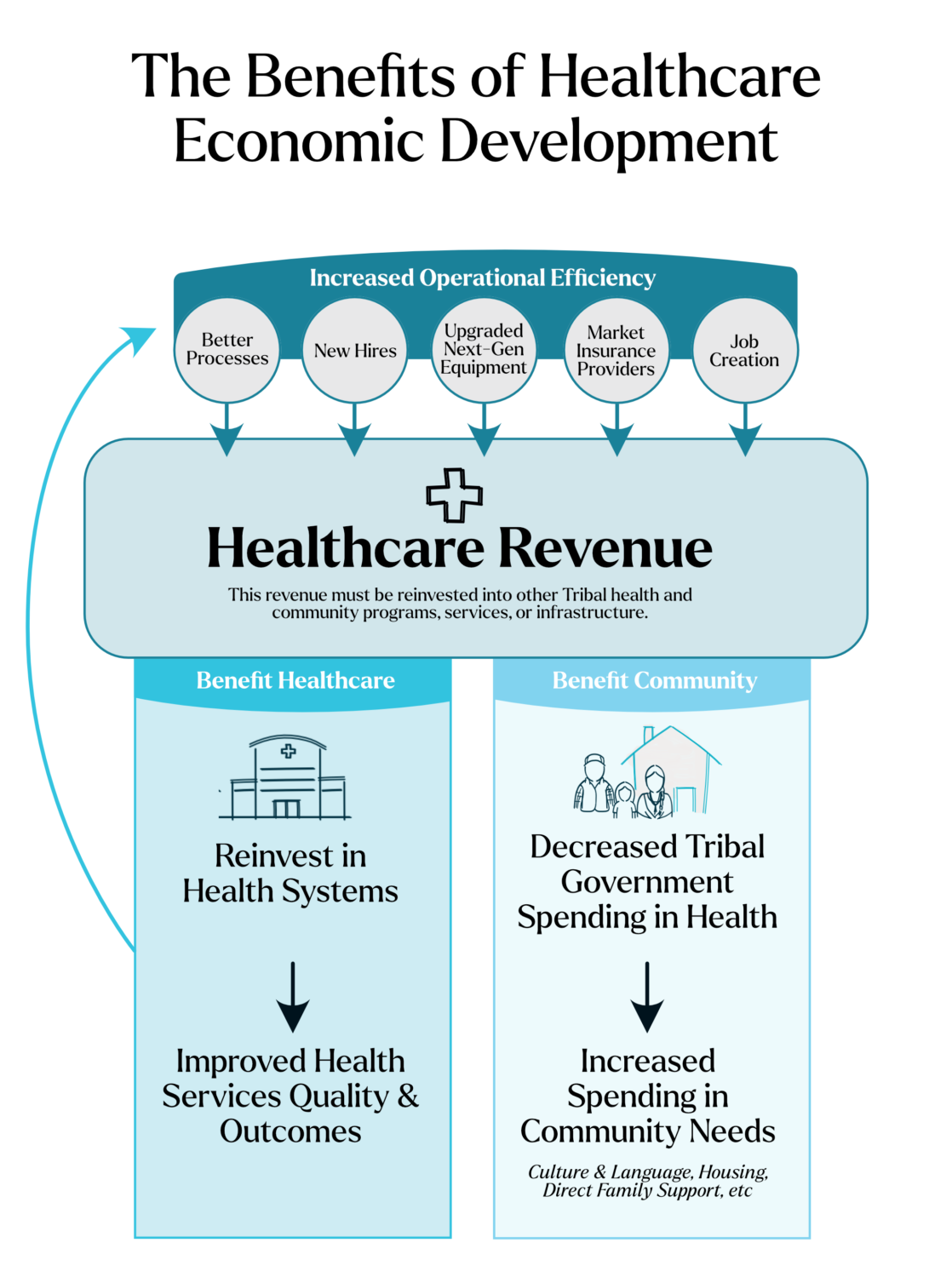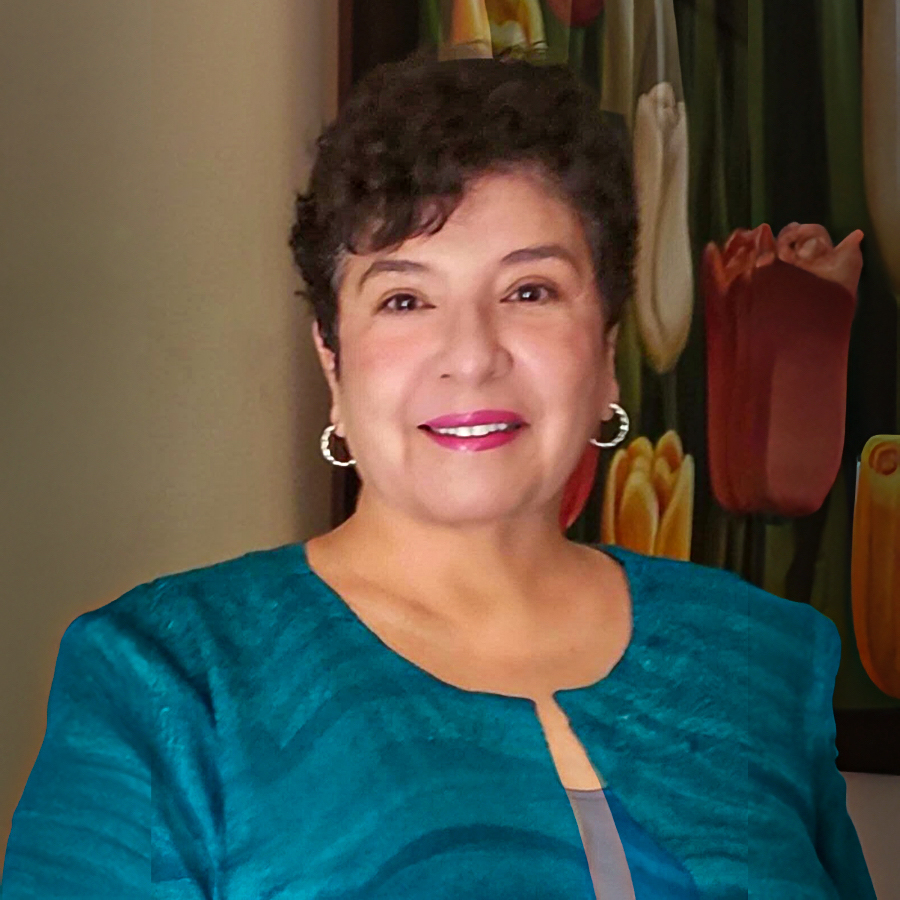Key Takeaways:
- The healthcare industry is a resilient and significantly profitable sector of the US economy, totaling over 70 times the size of the gaming industry with over $4.3 trillion in annual revenues.
- Tribal Nations have the opportunity to leverage their health systems, or expand their health services, to start driving economic development with a direct impact to the health and wellness of the community.
The Opportunity
A Growing & Resilient Sector
In the United States, the healthcare service industry—composed of hospitals, clinics, pharmaceuticals, insurance, health IT etc.—is one of the largest and fastest-growing sectors of the economy. According to the American Medical Association, healthcare spending in the United States reached $4.3 trillion in 2021*, representing approximately 18.3% of the nation’s gross domestic product. To give an idea of how large of an economic impact this data represents, the total revenues in the Tribal gaming industry were only approximately $40 billion in 2022†, meaning the health sector is more than 100 times the size of the Tribal gaming industry in the national economy. Unlike gaming and the travel/tourism industry, the health sector is also highly resilient to economic shocks, such as pandemics, recessions, or climate emergencies.
“To give an idea of how large of an economic impact this data represents, the total revenues in the gaming industry were only $60.42 billion in 2022, meaning the health sector is more than 70 times the size of the gaming industry in the national economy.”
There is reason to believe that the healthcare industry is going to continue growing in the years to come. The United States is experiencing aging populations, increasing chronic disease rates, and increased access to health services throughout the population through advances in medical technology. The demand for healthcare services will continue to grow in the coming years, as well as the ability for services to reach a larger population. This will result in continued global growth and expansion of the healthcare service industry.
Healthcare as an Economic Development Opportunity for Tribes
While Tribal Nations typically view healthcare as a community service, considering it as an economic development opportunity is not contradictory with this approach. In fact, adopting a business mindset in the health sphere can have a meaningful and holistic effect on the community and Tribal economy in various ways:
- Increased Revenues to Reinvest into Health & Community Services: Approaching health as a business, and opening healthcare services to the surrounding community, can generate significant revenues for the Tribe through insurance payments and Medicaid reimbursements. This revenue must be reinvested into other Tribal health and community programs, services, or infrastructure.
- Improved Health Services Quality & Outcomes: By generating additional revenues for reinvestment into healthcare services, Tribes can significantly improve the quality of health service offerings, and their communities’ overall health and well-being. Potential areas of reinvestment from health revenues include behavioral health, substance abuse, supportive/transitional housing, community centers, wellness programming, gyms, community garden, healthy food stores etc.
- Increase Self-Sufficiency & the Tribal Budget: When revenues are generated and reinvested within the Tribal healthcare system, the system as a whole is in need of less support through grant dollars and Tribal government investments. This additionally frees up Tribal government budget dollars for investment into other projects, services, or community needs.
- Job Creation: Investing in healthcare infrastructure and developing health services can create job opportunities for Tribal members. This can help reduce unemployment and poverty rates on the reservation and can lead to increased economic growth.
- Cultural Preservation: Traditional healing practices are essential to many Tribal cultures. By developing healthcare services that incorporate traditional healing methods, Tribes can preserve their cultural heritage while also providing valuable healthcare services to their communities.
- Community Development: Investing in healthcare services can also help attract other businesses and services to the reservation, further stimulating economic growth and development.
Entering the Market
Improve Existing Operations
The lowest-hanging fruit opportunity for Tribes that have control over existing operations to consider when entering the health services market from an economic development lens is with existing operations. Many Tribal health systems operate with significant gaps in efficiency and effectiveness. Focusing on improving existing operations, and then potentially opening existing operations to non-Tribal member employees/families, or even the general public, can have a significant impact on health revenues and support the mindset shift of the community and Tribal government to see the economic development potential of health services.
There are a number of improvements that can be made to existing operations that can improve the profitability of existing operations:
- Increase Productivity of Organizational Workflow & Processes: Many Tribal clinics operate with outdated policies and procedures, ineffective organizational charts, and a lack of accountability. Instituting best practices in organizational workflows, and implementing a culture of productivity, can have a significant impact on the profitability of current operations.
- Identify Staffing Solutions: Recruiting and retaining staff and providers is a significant challenge for many Tribal Nations. However, there are ways to improve recruiting practices and to be more competitive in the market. Tying these practices to a more efficient and effective system will allow you to make up for the increased costs accompanying labor market competitiveness.
- Institute Next Generation Equipment and Technology: This may involve assessing the equipment and technology used in the clinic, including medical devices, electronic health record (EHR) systems, and other technological tools that support clinic operations.
- Financial & Community Performance Indicators: Ensure that performance indicators for health systems are tied to assessing the financial performance and patient impact of the clinic, including revenue, expenses, and profitability, as well as health outcomes.
- Market the Community Benefit of Medicaid, Veterans Affairs, and Other Insurance Providers: One of the main potential revenue sources for Tribal health systems is billing rates through Medicaid, veterans affairs, or other outside insurance providers. Many Tribal members do not utilize these benefits or insurance providers at Tribal clinics as it is not required to receive services. Tribes can market and request Tribal members to utilize these benefits and providers at Tribal clinics to increase revenues.
Get Tribal Buy-In
Despite the significant impact that healthcare can have on a Tribal economy, there is still tension within the concept of approaching healthcare as an economic development opportunity. In the first place, healthcare has traditionally been viewed as a community service, and looking at healthcare through a business lens can be ethically challenging. Second, much of the feasibility of executing the healthcare business model depends on allowing non-Tribal members to access health services, something many Tribes are not comfortable with.
It’s important to note that even when healthcare services are viewed through an economic development lens, the key performance indicators and overall definition of success in the venture should always be tied to impacts to the community’s health and well-being. As healthcare profits through Medicaid, Medicare, or other insurer reimbursements can only be reinvested into the health and wellness of the community, this overarching goal is always kept in mind.
Additionally, though garnering community buy-in can be an ideological challenge when it comes to the healthcare for-profit model, there are ways to ensure that the community’s interests are protected at all times. One example of this is to have a separate wing of the health facility that is just for Tribal members. Another is to simply provide separate access points for Tribal members. Both of these options are ways to show how a successful for-profit model can enable you to provide world-class healthcare to your Tribal members without having the potentially negative impacts associated with non-Tribal members accessing the same services.
Conclusion: Plan and Get Alignment
Taking on healthcare as an economic development driver has the potential to have a significant impact on all Tribal economies, and in some cases, could serve as the highest economic driver for the community as a whole. However, improving health systems and opening them to the broader community can be a significant undertaking for Tribal Governments that requires careful planning and consideration.
Through proper planning and community alignment, Tribes can determine which model best suits their needs and will contribute positively to future generations.



